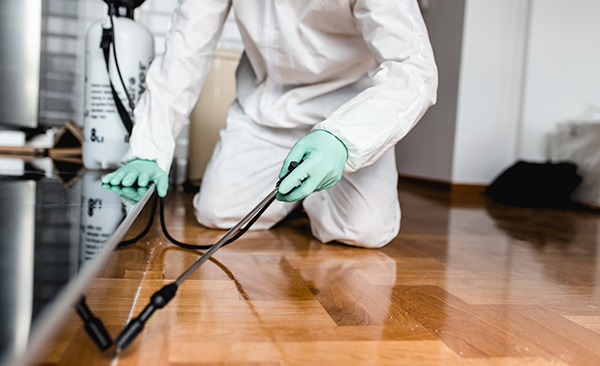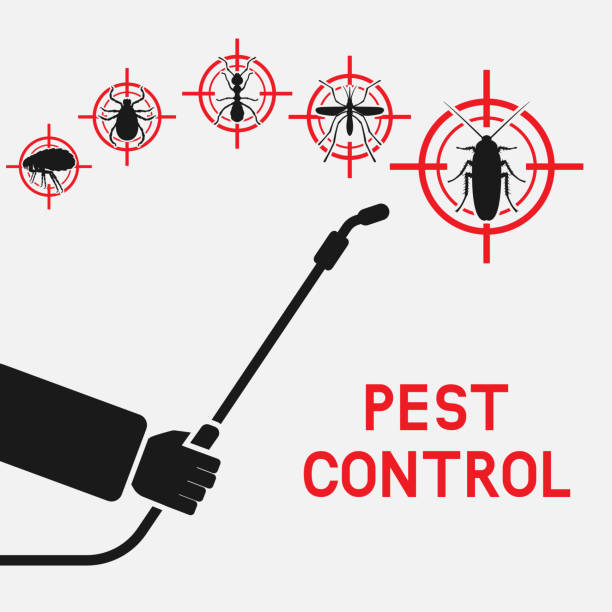Why Choose Pest Control Lockhart for Your Home Protection Needs
Why Choose Pest Control Lockhart for Your Home Protection Needs
Blog Article
Checking Out Infestation and Therapy Methods on the planet of Parasite Control
The landscape of bug control encompasses a myriad of obstacles, especially as infestations of typical family bugs remain to advance. Comprehending the actions and reproductive patterns of these annoyances is essential for creating efficient therapy techniques. By incorporating safety nets with sophisticated monitoring techniques, such as Integrated Parasite Management (IPM), house owners can better secure their settings. The performance of these methods might differ significantly based on certain conditions. What underlying elements add to the success or failing of these techniques in different setups?

Typical Family Vermin
When it involves handling our space, understanding common home insects is vital. These bugs not just interrupt our convenience yet can also posture wellness risks and damages residential property. One of the most widespread house insects include ants, cockroaches, rats, termites, and bed pests.
Ants, typically seen foraging in cooking areas, can pollute food and develop huge swarms. Rodents, consisting of mice and rats, can trigger architectural damage and bring illness like hantavirus and salmonella.
Acknowledging the signs of these bugs, such as droppings, nests, or attack marks, is crucial for very early intervention (Pest Control Lockhart). Correct sanitation methods, securing entrance points, and keeping a clutter-free setting are reliable preventative measures. By determining these usual house insects and comprehending their behaviors, property owners can take positive steps to alleviate infestations, making sure a much healthier living atmosphere
Recognizing Pest Infestations
Bug problems can escalate promptly, transforming a minor aggravation into a considerable problem if not attended to promptly. Comprehending the nature of these problems is crucial for effective management. Bugs can attack domestic and business areas for numerous factors, consisting of the look for food, shelter, or breeding premises. Typical elements adding to infestations include inadequate sanitation, structural susceptabilities, and seasonal adjustments that drive insects inside your home.
Identifying the type of pest is important, as different species exhibit varied behaviors and reproductive prices. Rodents might develop nests in concealed areas while insects like roaches grow in wet atmospheres. Early detection frequently depends upon identifying indicators such as droppings, chomp marks, or unusual sounds, which can show a trouble before it becomes extreme.
Ecological conditions also play an essential function in insect proliferation. Cozy, damp climates can promote the fast growth of bug populations, while changes in landscape design or building can inadvertently develop favorable settings. As a result, regular examinations and preventative procedures are paramount to minimizing the danger of problems. An informed technique to understanding these characteristics prepares for efficient pest administration strategies in the future.
Therapy Techniques and Methods
Effective treatment approaches and techniques are essential for mitigating bug invasions and recovering a risk-free setting. A complex technique is often best, including chemical, organic, and mechanical strategies customized to the particular pest and the intensity of the problem.
Chemical therapies consist of using pesticides and herbicides, which can successfully eliminate pests. However, appropriate application and adherence to security guidelines are essential to reduce dangers to humans and non-target organisms. Integrated Insect Management (IPM) motivates the judicious usage of chemicals as a last resource, counting rather on tracking and threshold degrees to determine treatment demands.
Biological control methods entail introducing all-natural killers or parasites to reduce pest populations. This technique is increasingly prominent, especially in agricultural settings, as it promotes ecological sustainability.
Mechanical approaches, such as traps and barriers, provide prompt relief from parasites without presenting chemicals. Options include sticky traps for pests or physical barriers for rodents.
Eventually, the option of treatment method ought additional hints to consider the particular parasite, the environment, and possible effect on human health and wellness and communities. A well balanced combination of these methods can properly take care of invasions while advertising long-lasting bug control services.
Safety Nets for Homes
Proactively addressing pest concerns before they rise is vital for keeping a healthy and balanced home atmosphere (Pest Control Lockhart). Carrying out reliable preventative measures can significantly lower the chance of infestations, ultimately securing both your residential or commercial property and wellness

Appropriate landscape design also plays a critical function in prevention. Keeping shrubs and trees trimmed away from the home decreases the opportunities of parasites locating their means inside. In addition, make certain that drainage systems are functioning efficiently to stop standing water, which can reel in mosquitoes and various other insects.
Lastly, regular inspections are a good idea. Regularly inspecting for signs of insect task permits for early intervention. By adopting these preventive procedures, house owners can create an environment that is less congenial to pests, consequently enhancing their total top quality of life and lowering the demand for comprehensive bug control interventions.
Commercial Bug Control Strategies
A thorough method to commercial pest control is important for organizations intending to maintain a risk-free and sanitary environment. Effective approaches include a combination of regular assessments, employee training, and the application of Integrated Insect Administration (IPM) practices.
Regular examinations enable early detection of bug task, permitting timely intervention. Businesses ought to create a routine schedule for these evaluations, concentrating on high-risk areas such as cooking areas, storeroom, and waste disposal sites. Worker training is just as essential; personnel needs to be educated on the signs of bug problems and the my latest blog post value of reporting them promptly.
Applying IPM practices helps alleviate bug concerns sustainably. This consists of environment modification, such as sealing entry points and lowering mess, along with employing all-natural deterrents prior to considering chemical therapies.

Moreover, collaborating with a certified insect control supplier makes certain accessibility to specialist expertise and innovative therapy choices. This collaboration can cause personalized insect control prepares tailored to the particular needs of business, minimizing risks and boosting general efficiency. Eventually, a positive and informed approach cultivates a pest-free setting, guarding both public wellness and service track record.
Conclusion
In verdict, efficient parasite control requires a thorough understanding of common family pests and their habits, paired with targeted treatment techniques. Implementing precautionary actions alongside therapy approaches such as Integrated Insect Administration and organic control enhances the capability to minimize infestations.
Report this page